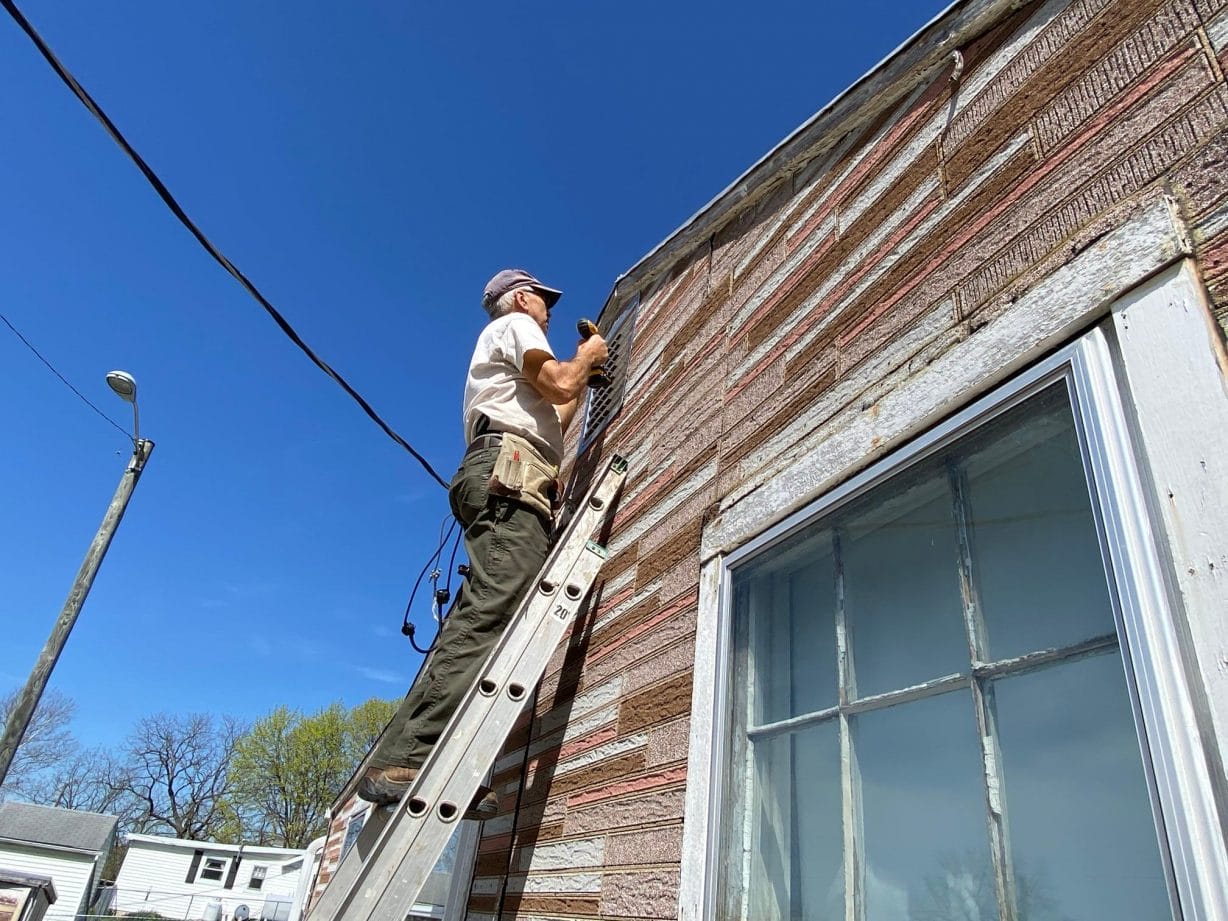By Eric Gorton, senior contributor
The Shenandoah Valley Black Heritage Project should see significantly reduced electricity bills once renovations to its building on Hill Street are complete sometime this summer.
The $11,500 project includes adding insulation in the attic, replacing a window, replacing electric heating units with mini-split heating and cooling systems, and adding solar panels to the roof. The improvements could save the nonprofit historic preservation organization up to $40 a month, said Jeff Heie, executive director of GiveSolar, one of several area businesses and organizations supporting the project through a combination of monetary and in-kind donations.
“Hopefully it will mostly eliminate their electric bill,” Heie said.
Beyond helping SVBHP become more energy efficient, Heie said the effort could lead to more awareness and collaboration between environmentalists and the African American community.

“Through this project, we’re going to try to reach out to people who may not ordinarily be supporters of a project like SVBHP,” said Heie, who is white. “We hope to expand the profile and donor base of SVBHP.”
Traditionally a lot of the environmental groups are predominantly Caucasian, Heie said. “This project is an opportunity for these groups to ally with an organization that is working to elevate African American history and culture in the Valley,” he added. “We also hope that this project will result in amplifying sustainability efforts among the faithful supporters of the Black Heritage Project. We hope for some meaningful cross-pollination to happen as a result of this project.”
Monica Robinson, executive director of the SVBHP, said the energy efficiency and solar project will help show the impact racism had on African American communities. “The mission of our project is to share, learn and illuminate the history of African Americans and therefore we wouldn’t be telling a true story if we didn’t address the racism portion of environmentalism,” she said.
Citing Harrisonburg’s urban renewal program in the ’50s and ’60s, Robinson explained how African American communities were often restricted to areas that lacked resources such as green space and that reinforced segregation.
“What we’re hoping is that through what we’re doing, we will be giving the community back some of the things that were never given to them in the first place that were given to other neighborhoods, so we’ll be teaching sustainability,” she said.
Robinson said SVBHP also will be doing a gardening project and a permeable pavement project to help teach about sustainability and that “there’s so many reasons why these groups should be a part of our project.”
Signage will go up describing the benefits of each project. “With the permeable pavement, we’ll be teaching about the runoff, about the pollution and about why we should do this, why we should have rain barrels, not just we have permeable pavement and no one knows why,” Robinson said.
Along with GiveSolar, businesses and organizations that have provided or pledged support include 50 x 25 Harrisonburg, Alliance for the Shenandoah Valley, Climate Action Alliance of the Valley, Gaines Group Architects, Harrisonburg Carpenter’s Guild, Harrisonburg Unitarian Universalists, JZ Engineering, Sierra Club Shenandoah Group and Voluntary Gas Tax.

The project has received about half the money it needs and some of the work has been completed. A crowdfunding campaign to raise the rest of the money begins today. More information about the project and how to donate can be found on the SVBHP website.
“Honestly I’m hoping to overshoot the goal,” Heie said. “I think there is going to be a lot of support for this in the community.”
Any money raised above the goal would be used for SVBHP programming. The SVBHP mission is to learn about and share information about African American history and culture in the Shenandoah Valley. The building provides internet access, help with ancestry research and a library.
Heie and Robinson said the project was started when they were introduced by mutual contacts.
From there, a project team was assembled to assess the building’s energy needs and what upgrades were needed to make it the most energy efficient before adding solar panels.
“It’s always best to do an energy audit first, identify the low-hanging fruit of energy efficiency that could be done prior to solar,” Heie said.
He estimated that every dollar spent on energy efficiency saves $3 on solar.
Heie also started contacting groups he thought would support the project and arranged a work day on Good Friday, April 15, to address many of the issues identified in the energy audit.
Remaining work includes adding about eight inches of insulation to the attic, replacing the window, painting the roof and adding the solar panels. Heie is planning a “solar picnic” for supporters to come and watch the solar panel installation while enjoying some food and fellowship.
Journalism is changing, and that’s why The Citizen is here. We’re independent. We’re local. We pay our contributors, and the money you give goes directly to the reporting. No overhead. No printing costs. Just facts, stories and context. We’re also a proud member of the Virginia Press Association. Thanks for your support.













